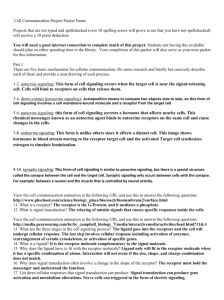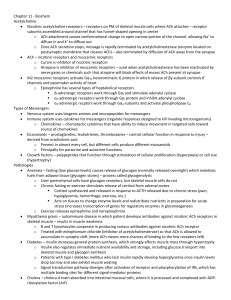Cell communication lesson web quest
advertisement
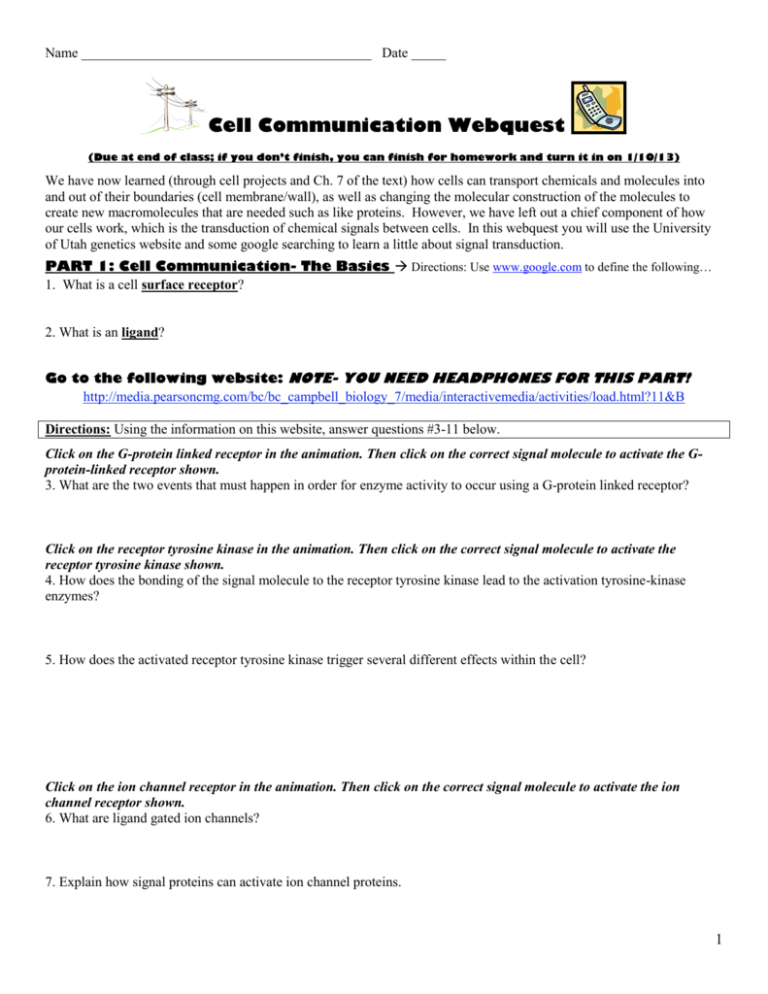
Name __________________________________________ Date _____ Cell Communication Webquest (Due at end of class; if you don’t finish, you can finish for homework and turn it in on 1/10/13) We have now learned (through cell projects and Ch. 7 of the text) how cells can transport chemicals and molecules into and out of their boundaries (cell membrane/wall), as well as changing the molecular construction of the molecules to create new macromolecules that are needed such as like proteins. However, we have left out a chief component of how our cells work, which is the transduction of chemical signals between cells. In this webquest you will use the University of Utah genetics website and some google searching to learn a little about signal transduction. PART 1: Cell Communication- The Basics Directions: Use www.google.com to define the following… 1. What is a cell surface receptor? 2. What is an ligand? Go to the following website: NOTE- YOU NEED HEADPHONES FOR THIS PART! http://media.pearsoncmg.com/bc/bc_campbell_biology_7/media/interactivemedia/activities/load.html?11&B Directions: Using the information on this website, answer questions #3-11 below. Click on the G-protein linked receptor in the animation. Then click on the correct signal molecule to activate the Gprotein-linked receptor shown. 3. What are the two events that must happen in order for enzyme activity to occur using a G-protein linked receptor? Click on the receptor tyrosine kinase in the animation. Then click on the correct signal molecule to activate the receptor tyrosine kinase shown. 4. How does the bonding of the signal molecule to the receptor tyrosine kinase lead to the activation tyrosine-kinase enzymes? 5. How does the activated receptor tyrosine kinase trigger several different effects within the cell? Click on the ion channel receptor in the animation. Then click on the correct signal molecule to activate the ion channel receptor shown. 6. What are ligand gated ion channels? 7. Explain how signal proteins can activate ion channel proteins. 1 Name __________________________________________ Date _____ Click on the intracellular receptor. Then click on the correct signal molecule to activate the intracellular receptor shown. 8. Where are intracellular receptors located? 9. List two examples of steroid hormones that act on intracellular receptors. 10. Explain why nonpolar molecules are able to pass through the plasma membrane to bind to intracellular receptors. 11. Explain how steroids cause changes inside a cell. Go to the following website: NOTE- YOU NEED HEADPHONES FOR THIS PART! http://media.pearsoncmg.com/bc/bc_campbell_biology_7/media/interactivemedia/activities/load.html?11&C Directions: Using the information on this website, answer questions #12-17 below. 12. What are signal transduction pathways? 13. List two things signal transduction pathways allow for. 14. What are second messengers? 15. List 2 important second messenger molecules 16. What is a protein kinase? 17. Discuss how protein kinases function to produce signal amplification in a cell. 18. Go to the following website: NOTE- YOU NEED HEADPHONES FOR THIS PART! http://highered.mcgraw-hill.com/sites/0072507470/student_view0/chapter17/animation__membranebound_receptors__g_proteins__and_ca2__channels.html a. Animation: Membrane-Bound Receptors, G Proteins, and Ca2+ Channels (Quiz score: _____/5) Summarize events: b. Animation: Membrane-Bound Receptors that Activate G Proteins (Quiz score: _____/5) Summarize events: c. Animation: Second Messenger: camp (Quiz score: _____/5) Summarize events: 2 Name __________________________________________ Date _____ d. Animation: Hormonal Communication (Quiz score: _____/5) Summarize events: e. Animation: Intracellular Receptor Model (Quiz score: _____/5) Summarize events: PART 2: Cell Communication and Disease Use the animation below to assist you in answering question #19 below. Particularly focus on using frames 6-10 in working through your answer. If you get a message about site security, approve this link. https://www.ebi.ac.uk/interpro/potm/2004_10/Page3.htm Discuss how defective G protein function is associated with cholera. Go to the following website: NOTE- START AT SLIDE #58 to answer questions #20-23. Go to my website and click on Cell communication pdf for lesson and web quest!! 20. Discuss how defective receptors are associated with type II diabetes. Draw a picture to support your answer comparing the normal receptors with defective receptors. 21. Identify acetylcholine and its role in nervous transmission. 22. Why do nerve impulses not continue forever? Include discussion of the enzyme involved in preventing this from occurring in your explanation. 3 Name __________________________________________ Date _____ 23. Why do nerve agents such as insecticides result in organisms literally twitching themselves to death? PART 3: Cell Communication and “Fight or Flight Response” Directions: Go to the University of Utah Genetics website at http://learn.genetics.utah.edu/content/begin/cells/. Under the “Cell Communicate” section on this page, click on “AN EXAMPLE OF CELL COMMUNICATION: FIGHT OR FLIGHT RESPONSE.” Watch the movie on “Fight or Flight Response.” o NOTE- YOU MAY HEADPHONES FOR SOME OF THIS PART! 24. Click on the play button to view the movie, and then provide a brief synopsis of what the movie discusses below. Go back to the University of Utah Genetics website at http://learn.genetics.utah.edu/content/begin/cells/. Under the “Cell Communicate” section on this page, click on “HOW CELLS COMMUNICATE DURING THE FIGHT OR FLIGHT RESPONSE.” Read the information and answer the questions below. 25. What organs and/or glands are involved in the “Fight or Flight Response”? 26. What specific messager(s) is(are) involved in the “Fight or Flight Response”? Go to http://learn.genetics.utah.edu/content/begin/cells/insidestory/. Read the information and view the movies. 27. Describe what you learned in the space below. Go to http://learn.genetics.utah.edu/content/begin/cells/badcom/ and read about what happens when cell signaling goes wrong. 28. Describe what happens (in regards to cell communication) in the two diseases discussed on this webpage. a. Diabetes: 4 Name __________________________________________ Date _____ b. Multiple Sclerosis: 29. How is cell growth/cancer connected to cell communication? Go back to the http://learn.genetics.utah.edu/content/cells/signals/ website and find the section on the right side of the page that says “Dropping Signals”. Click on the hyperlink. In the following activity, o you will be clicking on 5 different cell types, and then recording your observations into a data table (below) explaining how each cell responded to the different chemical signals. Pick 1 of the chemical signals to activate a response for each cell. NOTE- YOU MAY HEADPHONES FOR SOME OF THIS PART! Cell Type Describe this cell type (click on “i" in the cell type box) Name of chemical signal that you picked Describe the cell’s response to chemical signal you picked Photoreceptor Muscle Cancer Leaf Parenchyma Fibroblast 5
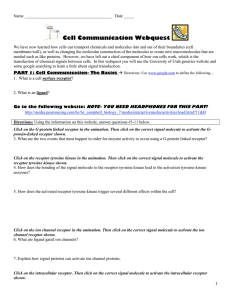


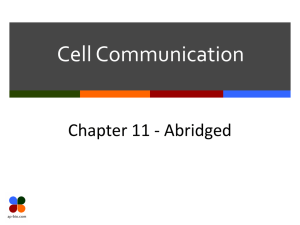
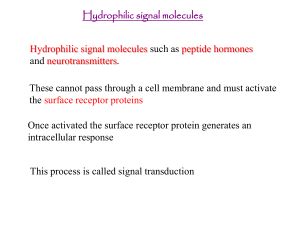
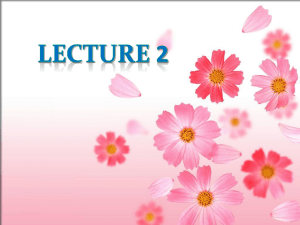


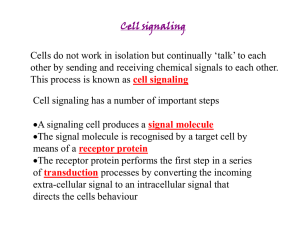
![Shark Electrosense: physiology and circuit model []](http://s2.studylib.net/store/data/005306781_1-34d5e86294a52e9275a69716495e2e51-300x300.png)
